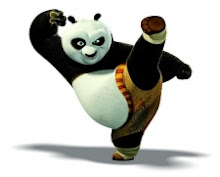Digital images captured by cameras, most of the time, are different from the one we see with our eyes -- although some are unrecongnizable. The color for example is altered by the spectral sensitivity and white balance settings of the camera. Another factor that contributes to these differences is the distortion it adds to the captured image due to its lens configuration. Pincushion and barrel distortions are observed in spherical lenses. In pincushion distortion, the image seems pinched in the middle and expanded in the boundaries. In barrel distortion, the image seems bloated in the middle and pinched at the sides *[1]. Below are images that demonstrates the two distortions.
Figure 1. (left) Pincushion and (right) barrel distortion of a square grid
Cameras using compound lenses have considerably minimized these effects. Single lens cameras render a much more obvious distortion.
In this activity, we are tasked to correct distorted image. We download an image from the net with distorted grid patterns. The idea is to perform an image processing technique to make straight lines look straight.
Steps in correcting a distorted image:
1. Find the image coordinates the four corners of a square where the effect of the distortion is small. Usually, this can be found at the center of the image or at the optical axis of the camera.
2. Create an ideal grid from the obtained coordinates. (The grid only contains corner points.)
3. Calculate c's from the corner points using the equation below to be able to transfer distorted image coordinate to the ideal image coordinates.(c's are unique to a specific square)
(x,y) is from the ideal image coordinates, (x,y) is from the distorted image coordinates. The c's allow us to determine the location of a pixel from the ideal image to the distorted image.In this activity, we are tasked to correct distorted image. We download an image from the net with distorted grid patterns. The idea is to perform an image processing technique to make straight lines look straight.
Steps in correcting a distorted image:
1. Find the image coordinates the four corners of a square where the effect of the distortion is small. Usually, this can be found at the center of the image or at the optical axis of the camera.
2. Create an ideal grid from the obtained coordinates. (The grid only contains corner points.)
3. Calculate c's from the corner points using the equation below to be able to transfer distorted image coordinate to the ideal image coordinates.(c's are unique to a specific square)
4. Transfer grayscale values.
- Nearest neighbor technique: In determining the distorted image coordinates that correspond to the ideal image coordinates (using the c's), cases may occur that the calculations would yield non-integer coordinates. In the simplistic case, one can round the coordinates, then the grayscale value of the that pixel will be transferred to the ideal image. The advantage of this is that it is fast, although the reconstruction is pixelated and jagged.
- Bilinear interpolation: If the location of the pixel from the ideal image corresponds to integer distorted image coordinates, pixel values from the distorted image can be directly transferred to the ideal image. If not, we use the equation below:
a, b, c and d can be calculated using the surrounding pixels of the pixel with non-integer coordinates.
Results
In this work, we demonstrate the two techniques used in the correcting distorted images as well as the other application of the techniques.
Results
In this work, we demonstrate the two techniques used in the correcting distorted images as well as the other application of the techniques.
The above figure consist of the distorted grid and the corrected grid. In this particular example, the nearest neighbor technique was used. We can see that this technique can fairly reconstruct the image. The 'jagged' effect of the technique is less manifested because of the thick lines of the grids.
Note: In this work, the distorted image coordinates of the corner points were determined using the locate function in Scilab. Given a very large grid, this procedure is very tedious and time-consuming. Alternatively, one can perform image processing techniques to determine the coordinates. However, when given a real distorted image as in Fig.3, locate is much more convenient to use since it would be harder to separate the grid lines.
Note: In this work, the distorted image coordinates of the corner points were determined using the locate function in Scilab. Given a very large grid, this procedure is very tedious and time-consuming. Alternatively, one can perform image processing techniques to determine the coordinates. However, when given a real distorted image as in Fig.3, locate is much more convenient to use since it would be harder to separate the grid lines.
The procedure can also be applied to distort an image. Here's how it's done.
We have a very good, undistorted image. We overlay a distorted grid to the image. Then we perform the same procedure as done previously. In this particular case, we use the bother technique, bilinear interpolation to reconstruct the image.Below is the image and its distortion.

Figure 3. (above) image and (below) its distortion
Here, we observe the success of the procedure. We have straightened the straight lines and were able to distort the image. Image distortion will be highly appreciated if the pixels from the ROI is contained in obviously distorted grids.
I give myself a grade of 10 fro exploring to the two techniques and the possible application of the procedure.
I thank Mark Jayson, Luis and Orly for useful discussions.
I give myself a grade of 10 fro exploring to the two techniques and the possible application of the procedure.
I thank Mark Jayson, Luis and Orly for useful discussions.
References:
[1] Activity 13 manual
[2]http://upload.wikimedia.org/wikipedia/en/9/97/Pincushion-distortion.jpg
[3]http://upload.wikimedia.org/wikipedia/commons/thumb/6/63/Barrel_distortion.svg/600px-Barrel_distortion.svg.png
*Sentences are stated vervatim.
[1] Activity 13 manual
[2]http://upload.wikimedia.org/wikipedia/en/9/97/Pincushion-distortion.jpg
[3]http://upload.wikimedia.org/wikipedia/commons/thumb/6/63/Barrel_distortion.svg/600px-Barrel_distortion.svg.png
*Sentences are stated vervatim.





No comments:
Post a Comment